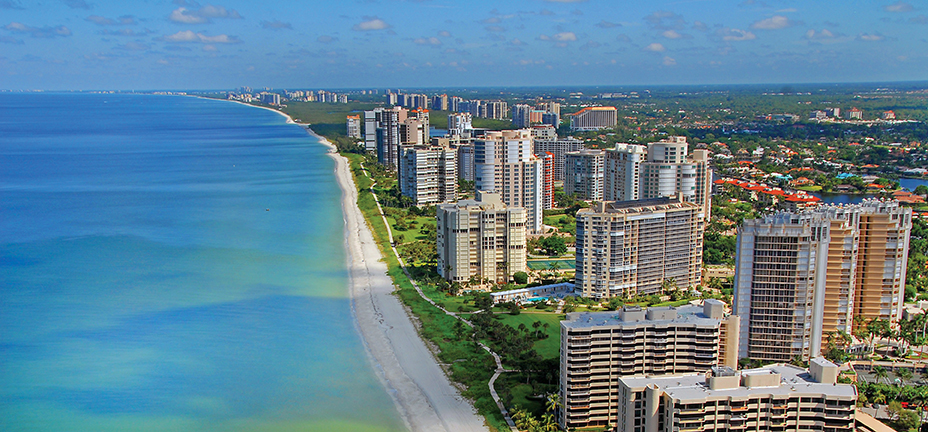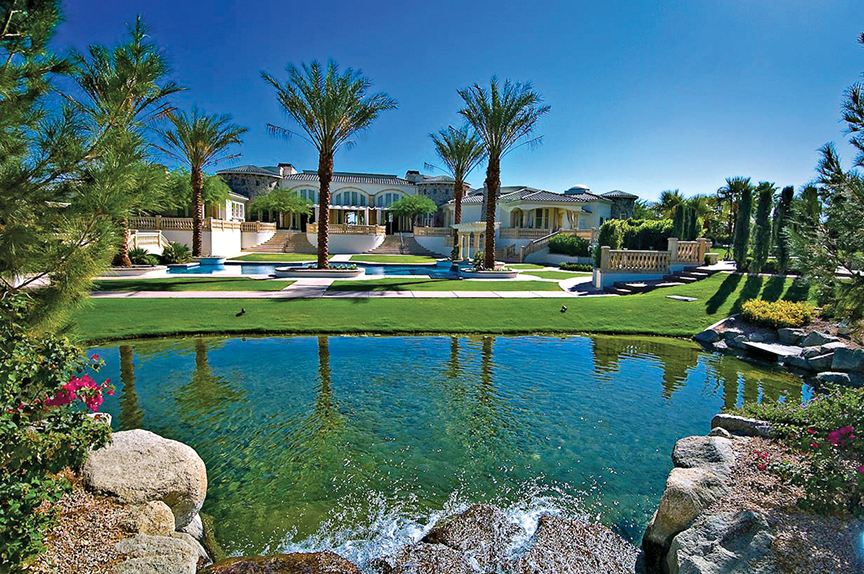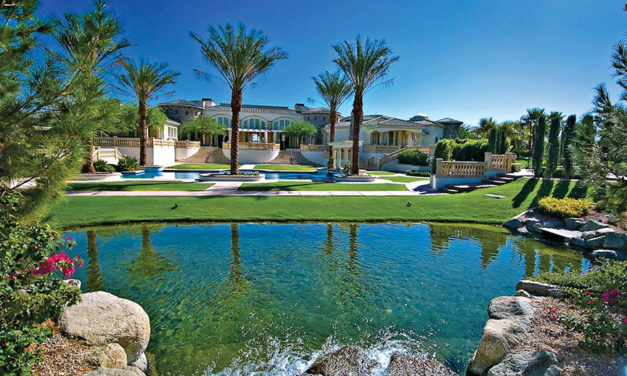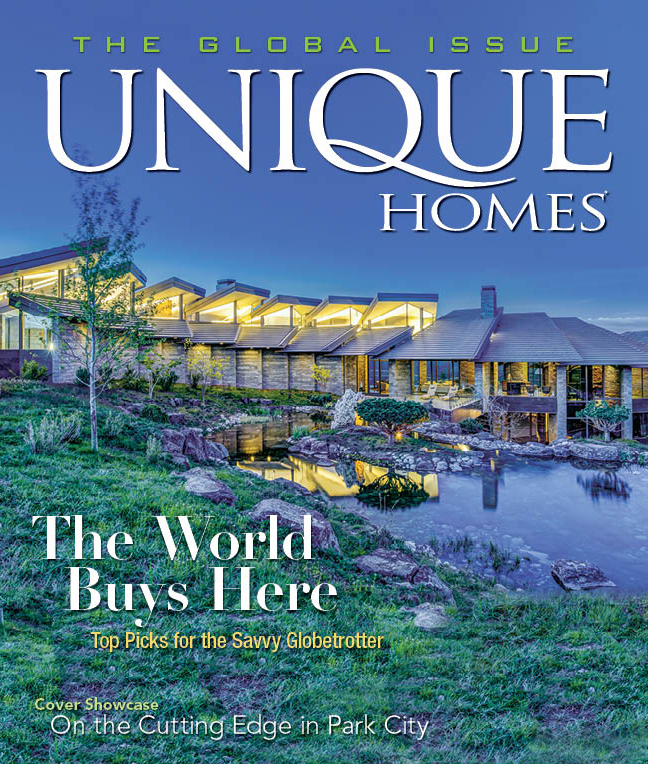In 2017, Unique Homes is traveling the U.S. to find the dominant stories in each region of the country — this issue covers international buyers.
By Camilla McLaughlin

Photo courtesy istockphoto.com/ALotOfPeople
“International buyers are spreading their wings. It’s not just about New York, Miami and L.A. anymore,” observes Stephanie Pfeffer Anton, executive vice president of Luxury Portfolio International.
When buyers from outside the country came to the U.S., they used to gravitate to a handful of cities. Today, they are apt to look for homes and condos almost anywhere in the country. Even though five states capture the most international attention, 46 percent of sales to foreign buyers are scattered across the country in states ranging from Kentucky to Massachusetts to Illinois. Buyers from China, Canada, the United Kingdom, Mexico and India account for just over half of the transactions, but 48 percent, almost half of all foreign buyers, hail from other countries.
“Quite simply, as the world continues to get smaller, the number of people with the interest and means to purchase outside their own country increases. Buyers are spreading their wings. It’s not just about New York, Miami and L.A. anymore. Global buyers continue to be a small percentage of buyers in most
markets, but even our members in smaller markets like Wilmington, North Carolina or Boulder, Colorado, are reporting demand from non-U.S. buyers,” says Stephanie Pfeffer Anton, executive vice president of Luxury Portfolio International.
The much publicized pull back of luxury buyers and substantial inventory of upscale properties in Manhattan and Miami might create the impression that demand from foreign buyers is in the doldrums; in reality, sales of residential property to foreign buyers hit a new high in the 12 months ending March 2017. Total dollar volume jumped 49 percent (from $102 billion to $153 billion), and the number of sales increased 32 percent, according to the National Association of Realtors (NAR). “The political and economic uncertainty both here and abroad did not deter foreigners from exponentially ramping up their purchases of U.S. property over the past year,” observed Lawrence Yun, NAR chief economist. “While the strengthening of the U.S. dollar in relation to other currencies and steadfast home-price growth made buying a home more expensive in many areas, foreigners increasingly acted on their beliefs that the U.S. is a safe and secure place to live, work and invest.”
Even with a strong dollar, tight inventories and recent appreciation, prices for U.S. residences are still lower than many other countries, and the search for value is bringing new groups of buyers to new places. As an example, Anne Miller, director, business alliances at RE/MAX, says more Canadians from British Columbia are looking in areas surrounding Portland, Oregon, and Seattle for a good investment that will hold its value. Also prompting purchases, according to Yun, is the possibility that other currencies could further weaken against the dollar, making U.S. properties more expensive in the future.
Once again, buyers from China accounted for the most transactions, spending $31.7 billion, up from 2015’s record $28.6 billion. However, NAR’s data was compiled before many of the new restrictions imposed by the Chinese government regarding the transfer of money outside mainland China were fully in force, and sales to Chinese nationals this year have been softer in some places. Still, brokers who work in the international arena, such as Joyce Rey, executive director, Coldwell Banker Global Luxury, say most very wealthy Chinese already have their money outside the country.
“We have seen a slowdown in the Chinese buyer, but they have by no means disappeared,” says Anton. “The slowdown is felt most directly in U.S. cities that saw a dramatic rise — places like Seattle and San Francisco.” Anton also points to other diverse factors fueling international demand, including changes in direct flights and education. “Boston is another example where we still see a lot of international buyers due in large part to the significant concentration of colleges and universities,” she says. Buying for a student, present or future, is important for a percentage of Chinese buyers.
Boston also has new ultra-luxury buildings offering a high level of security and an international design aesthetic that appeals to foreign buyers and Chinese buyers in particular. Boston, along with San Jose, San Francisco, Seattle, Los Angeles and San Diego were the U.S. markets most popular with Chinese shoppers. As a group, these buyers also typically target higher price points than domestic buyers.
For high-end properties, Bob Hurwitz, founder and CEO of the Hurwitz James Company in Beverly Hills, says Chinese buyers are shifting their focus toward lower prices. “The tightening of restrictions on capital leaving mainland China and buyers wishing to avoid scrutiny caused a pullback in purchases of high-profile property,” he says, noting that he is getting more requests for the $1.5 million to $4 million range.
Canadians as Catalysts
This year, Canadians were the wild card in the international mix. After dipping in the 2016 survey to $8.9 billion, transactions by Canadians hit a new high — $19 billion. The Canadian influence extends as far as Hawaii, but Florida is the epicenter. Twenty-two percent of all purchases by foreign buyers occurred in the Sunshine State, with the highest number to Canadians. South Florida ranks with Los Angeles as the U.S. markets eliciting the most international interest with inquiries on Realtor.com coming from Brazil, Columbia, Germany and the U.K., in addition to Canada.
Although geopolitical factors have slowed demand from some South American countries, Miami’s cachet as a global luxury hub is not tarnished. Value-conscious buyers, particularly Canadians, also look to Fort Lauderdale, according to Zach Joslin of the Brissi Group of EWM Realty International.

Park Shore Beach, Naples Florida
Photo courtesy The Bua Bell Group
Venezuelan buyers are drawn to nearby Weston. Indian buyers are newcomers in both Broward and Miami-Dade counties. An ongoing expansion of the Fort Lauderdale airport is expected to enhance international connections.
Nationally, those from outside the U.S. spend more on real estate than domestic buyers, and in Miami, they spend more on average than in anywhere else in Florida or nationally. About 70 percent of Miami Realtors work with international buyers, more than double NAR’s national figure.
Palm Beach continues to be recognized globally for luxury, and the area appeals to a diverse group hailing from countries including Germany, Argentina, Ireland and Russia, but agents say Canadians and buyers from the U.K. still comprise the largest contingent. Also casting a wide net globally is the equestrian season in nearby Wellington.
Orlando is the second location preferred by Florida’s international home buyers with 12 percent opting for the region, up from 8 percent in 2015. Like foreign buyers nationally, they tend to spend more on a purchase, usually with cash. Top countries of origin: Brazil, U.K. and Canada. Argentines and Venezuelans tend to buy rental properties with the intent of cashing in on the region’s steady stream of tourists. A recent market shift has 40 percent of purchases happening in central Orlando.
Perhaps the best testimony to changes in locations preferred by foreign buyers is Naples, Florida, where one is likely to encounter multiple languages on a stroll through downtown. “We’ve always had buyers from Canada, Germany and the U.K. But we are now seeing the Asian market consumers,” says Tade Bua Bell with John R. Wood Properties. Other newcomers are from Spain, France, Russia and Sweden. Top preference: turnkey residences near the beach and ocean. An exchange program between a local private school and a school in China also elicits international interest.

Casa Rancho Mirage, Palm Springs Valley California
Photo courtesy Hurwitz James Company
California Dreaming
California and Texas vie for second place in the race for international buyers with each accounting for 12 percent. Los Angeles, both the city and prime Westside enclaves such as Beverly Hills, continue to be a magnet for foreign buyers. In the ultra high end, Rey says, foreign buyers “typically dominate from 20 to 35 percent of the market, a number that varies from year to year.”
“They place great emphasis on views, and these types of properties are escalating in value as a result of the influence of foreign buyers,” she says. Middle Eastern buyers tend to go to Bel Air because of the views; Europeans look to Sunset Strip and Bel Air locations, also for views.
Traditionally, Asian buyers gravitated to the Pasadena/Arcadia area, and now Rey says she is seeing more coming to her market. Other hot locations for Chinese buyers include Bradbury and Irvine. Hurwitz says Russians and Ukrainians are diverse in what they look for, but tend to own in the same area they bought previously, whether that be Beverly Hills, Bel Air, Cheviot Hills or wherever.
Along with prices, foreign buyers also influence design and architecture, here and in a number of other locations. “Developers definitely build for an international taste level,” says Rey.
In Texas, international sales surged from April 2016 to May 2017, with the number of dollars doubling. In Dallas and Houston, both centers of international businesses including finance and energy, purchases from buyers out of the country are often related to work. One in 10 Indian buyers and 43 percent of Mexican buyers purchase in Texas. Also, 11 percent of Chinese buyers purchased in the Lone Star State. Brokers in a number of other states and locations including New Jersey and Connecticut are seeing a similar trend, particularly with buyers from India. Greenwich and Darien, Connecticut are also seeing more foreign buyers, many of whom might move from other U.S. locations.
What those buyers want is quite different than someone looking for a place to spend a few weeks a year, explains Diane Ramirez, chairman and CEO of Halstead Real Estate. Space for extended family or multiple generations or even really good staff quarters might be important to these buyers.
It is important to note, NAR’s data includes recent immigrants as well as non-resident buyers and it covers all price brackets.
Ramirez also points out that although influential, foreign buyers still comprise a small percentage of overall sales. “We always have interest from foreign buyers, but it is never the percentage most people think it is,” she explains.
After a sharp decline in 2015, the ranks of the ultra-wealthy globally grew by 3.5 percent in 2016, with North America and Asia registering the greatest increase. New York City, home to the largest concentration of ultra-wealthy, continues to vie with London for the top position in rankings such as the Alpha Cities Index, compliled by Wealth-X, Warburb Realty and Barnes International Realty, which ranks 50 of the world’s top cities based on their potential for a purchase and interest to ultra-wealthy individuals. A number of U.S. cities ranked among the top 20, with Chicago, San Francisco and Washington, D.C., in the top 10, along with New York. Los Angeles, Boston, Miami, Houston and Dallas rounding out the list. While San Francisco is a top market for foreign buyers, Chicago, Dallas and a few other cities have a larger ultra-high-net worth population.
Cedric Choi, Choi International, Honolulu
Craig Denton, Managing Broker and Director of Business Development, Berkshire Hathaway HomeServices Colorado Properties, Vail, Colorado
John Engle, Halstead Property, New Canaan, Connecticut
Karen Rodriguez, Group Kora and Berkshire Hathaway HomeServices Georgia Properties
Aleksandra Scepanovic, Managing Director, Ideal Properties Group




Leave a Reply